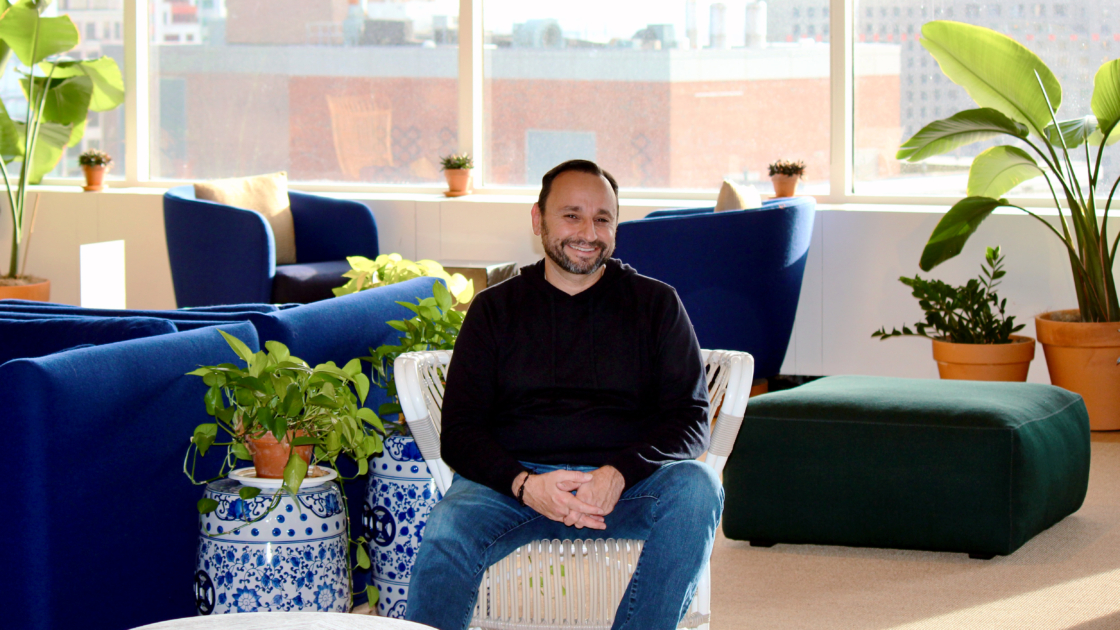In early March, Jacqueline Slatky got a call from her manager asking if she could help out with a potential COVID-19 case in a New York City WeWork space.
“Little did I know at the time that my project management skills would truly be put to the test as the organization was on the heels of an unforeseeable global event,” said Slatky.
The scale of what was to come was tough to fathom at the time: The World Health Organization declared the outbreak a pandemic in early March, and states across the country were only just beginning to declare states of emergency.
Slatky had been helping the company “work smarter, not harder” as a senior manager in operations excellence in the United States and Canada at WeWork since October 2018—but this was something else entirely.
“There was no precedent for how to deal with COVID-19. No amount of time scrolling through Google would give us the answers that we needed,” she said.
Today, that’s no longer the case. Members can walk into any WeWork around the world to find a safe and productive workspace replete with sanitization stations, distancing protocols, and widely available masks and gloves. This transformation, which is constantly iterating in response to emerging information about the pandemic, is thanks in large part to the pioneering teams in charge of keeping our buildings open. The mission of the building operations team is to improve and deliver world-class operational excellence so that WeWork’s community and operations teams can deliver an amazing member experience.
Alecia Craft, the director of operations of the United States and Canada, led the return to the office transformation plan. (Craft leads region-wide programs, while Slatky leads specific workstreams within the program.) “This is our new normal, and we needed to find a way to exist in it and feel safe,” said Craft, who started at WeWork in July 2019.
“We’re committed to meeting our member’s expectations of professional distancing and health and wellness, while still maintaining our strength in community and connection,” she says.
In the beginning
This transformation did not happen overnight. At a company with over 800 locations globally, including across 40 cities in North America alone, organizing a cohesive response was an immense task—especially given that almost overnight, a lot of this work went remote.
Carving an unprecedented path meant that Craft and Slatky had to start with some really basic questions: How is a COVID-19 case reported? Who needs to know what, and when? How do you disinfect a space? Who is responsible for making these decisions?
Daily stand-up meetings were implemented with the operations team; an internal Slack channel was launched to provide real-time updates.
“This is a time when pretty much everyone has had to work outside their job description for the sake of the company and our members,” said Slatky. “Before COVID-19, I was thinking about what type of non-dairy milk we should have in the pantry. Now I am on the front lines, making sure that our spaces are safe for members.”

It’s a responsibility that Craft and Slatky take seriously. Once the basic questions were answered, workspaces needed to be stocked with the right tools. Craft helped organize the largest shipment of products that had ever been made to existing WeWork buildings: 19,000 hand sanitizer dispensers, 13,000 wipe dispensers, signage explaining the new systems, pillows emblazoned with gentle distancing reminders, 5,000 boxes of gloves, and thousands upon thousands of face masks.
Craft put together a board on the project management service Monday.com to track everything. The team had to keep meticulous count of each building’s quantity of orders, the delivery dates, the tracking numbers, certificates of insurance so logistics providers could quickly drop pallets at the loading docks, any delivery failures, and anything else that needed to be documented and streamlined.
“That is what makes me passionate about what I do: being able to provide thoughtful leadership and direction when organizations need it most; being able to prioritize and create structure and process where there is disorganization,” said Slatky.
While all that was happening, Craft and Slatky were also leading a company-wide effort to develop protocols for a new world of work. These protocols—which are now in place at all WeWork locations—include de-densifying spaces (things like reducing and spacing out furniture in common areas), making hand sanitizer and wipes ubiquitous, and increasing the frequency of cleaning and sanitization (particularly in high-traffic areas). Community teams have also been outfitted with masks and gloves and undergo regular temperature checks.
Back to work
With all that in place, Craft and Slatky were excited to get members back into WeWork spaces—and they, themselves, were excited to return as well.
“I feel really great about coming back,” said Craft at a webinar in late July on adapting the workplace, which she participated in from WeWork 1448 NW Market St in Seattle. That location is a 10-minute walk from her house. “I’ve been stuck at home with 14-year-old twin daughters, and I’m happy to be out of the house today,” she says.
While there are things that Craft says she enjoys about working from home—like folding laundry during a conference call—she says there’s nothing quite like being in the same physical space.
“Collaboration really suffers. There’s just nothing like being with somebody and being next to someone and being able to have those impromptu conversations and brainstorming right then and there,” she said. Studies bear this out. According to a WeWork and brightspot strategy survey, employees working from home have seen an 11 percent drop in the ability to meet and brainstorm. For employees whose roles rely on collaboration, the decline is from 13 to 15 percent.
A new way of work, for a new world
Amid all the changes, WeWork has retained the things that brought members here in the first place: an impeccable eye for design, a strong sense of community, and the kind of entrepreneurial spirit that sees this pandemic as a challenge that can only be weathered collectively.
It’s why Craft and Slatky get out of bed every morning.

“I’m passionate about the member experience!” says Craft. “We want to make sure that we’re providing exceptional service to every person that walks into our buildings every day. All of our values show up in our work daily; we constantly strive to do the right thing and always do better.”
Craft and Slatky are now winding down their massive undertaking. Everything has been delivered and installed in buildings, but Craft still holds twice-weekly meetings with vendors and the operations team to ensure everything is fully in place. Increasingly, she is shifting her work to responding to member inquiries and helping members de-densify their offices as they settle back in.
As new information about COVID-19 emerges, WeWork continues to upgrade and adjust its systems for dealing with it. “It is one thing to build or improve a system or process. It is another thing to sustain it,” says Slatky. “Once a problem is fixed and solutions are in place, it’s critical to hold on to the gains.”
While fresh air has always flowed through WeWork offices, the company is currently working with global design and engineering firm Arup to heighten the health and safety of air filtration systems. Given how rapidly the Centers for Disease Control and local governments were changing business requirements at the beginning of the pandemic, Slatky started a Monday.com board to track any new state or local executive orders. Now that systems are in place, WeWork is able to quickly and efficiently implement any new local and state mandates regarding face coverings or other safety protocols.
“That’s how tomorrow works—to me, this means that the only constant is change. We will need to constantly check and adjust as we move through tomorrow,” said Craft. “WeWork is no stranger to resiliency—it’s what makes us who we are, and we will continue to demonstrate this as we learn and grow together.”
A.M. Higgins is a writer and content creator in Washington, D.C.







